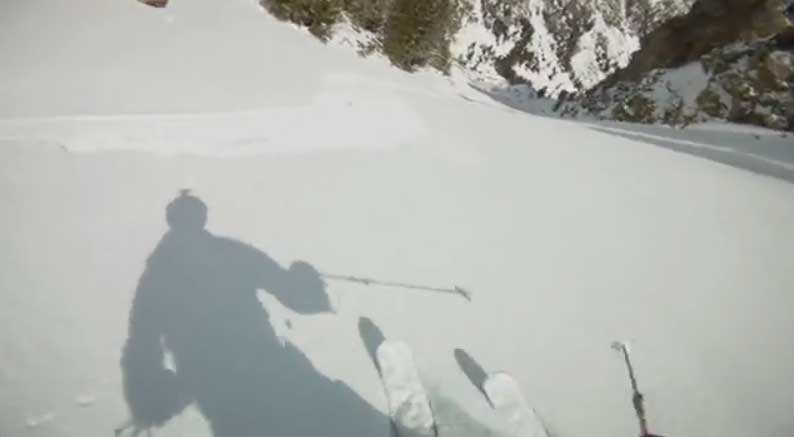
By Ruffin Prevost
A recent round of new snowfall across the region and the deaths of two backcountry skiers on Sunday in the Grand Teton area serve as grim reminders that outdoor winter sports in the greater Yellowstone area come with inherent risks.
While deaths and injuries from geysers and bears in Yellowstone National Park typically make international headlines, those hurt or killed nearby in avalanches typically receive scant notice outside of regional coverage.
What generates widespread national interest, though, are viral videos of a close call—images of skiers and snowmobilers in peril as they race to outrun (or dig out from) an avalanche.
With the cost of small, durable video cameras dropping while every new smartphone also comes equipped with a built-in high-definition camera, it’s hardly a surprise that more and more backcountry adventures are captured on video.
Ski films like those made by Warren Miller, and more recently Teton Gravity and others, have long offered the armchair crowd a safe look at spine-tingling snow adventures. But now a virtual army of amateur videographers routinely capture themselves and others in harm’s way.
The images are compelling, and perhaps even educational. When accompanied by personal accounts like that offered by skier Josh Tatman of his broken leg in April 2012 in Granite Canyon, the context can humanize an otherwise gruesome incident. It can also remind others of the risks of backcountry winter recreation.
Josh Tatman captured video of his own injury while skiing in Grand Teton National Park.
But where is the line between gnarly and disturbing? It’s a somewhat subjective matter as to whether a photo or video is informative, cautionary, exploitative, gruesome or something else.
Most news outlets have some sort of editorial review or vetting process for content that might be considered inappropriate. But such policies are hardly foolproof. And the boundaries between news and raw footage continue to shift as it becomes easier to post and share digital content.
Vine, a new video-sharing app from Twitter, generated a few unwanted headlines Monday when editors at the social media giant mistakenly featured a video with adult content. It’s not much of a stretch to imagine a similar mistake that highlights footage of a serious injury or fatal incident.
Ultimately, the entire community of photographers, readers, editors and writers must wrestle with shared responsibilities when it comes to the simple act of sharing content online.
But that doesn’t make it any easier when trying to decide where “the line” is drawn, and whether something crosses it.
Contact Yellowstone Gate at 307-213-9818 or [email protected].
A snowmobile rider in Afton, Wyo. outruns an avalanche.

Although some might find these videos disturbing (and I certainly winced at the sound of Josh Tatman’s leg breaking) they can also be educational. For example, I have never heard that cracking sound of a bone breaking before although I have heard it described. Now I know for sure what it is. Also, in the case of the avalanche, although my heart raced as I watched the slope crumble, it was very interesting to watch the slope break up in so many different zones at once, and track what would have been a safer route sideways, rather than straight down.